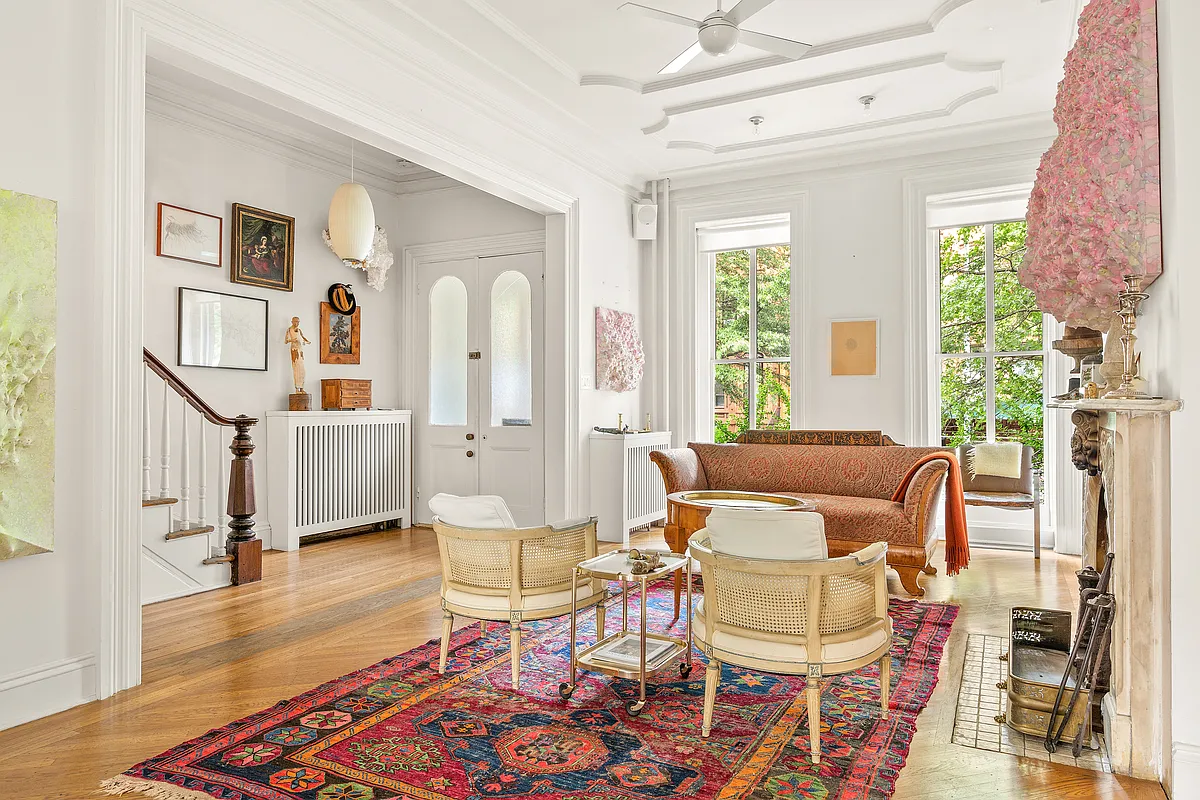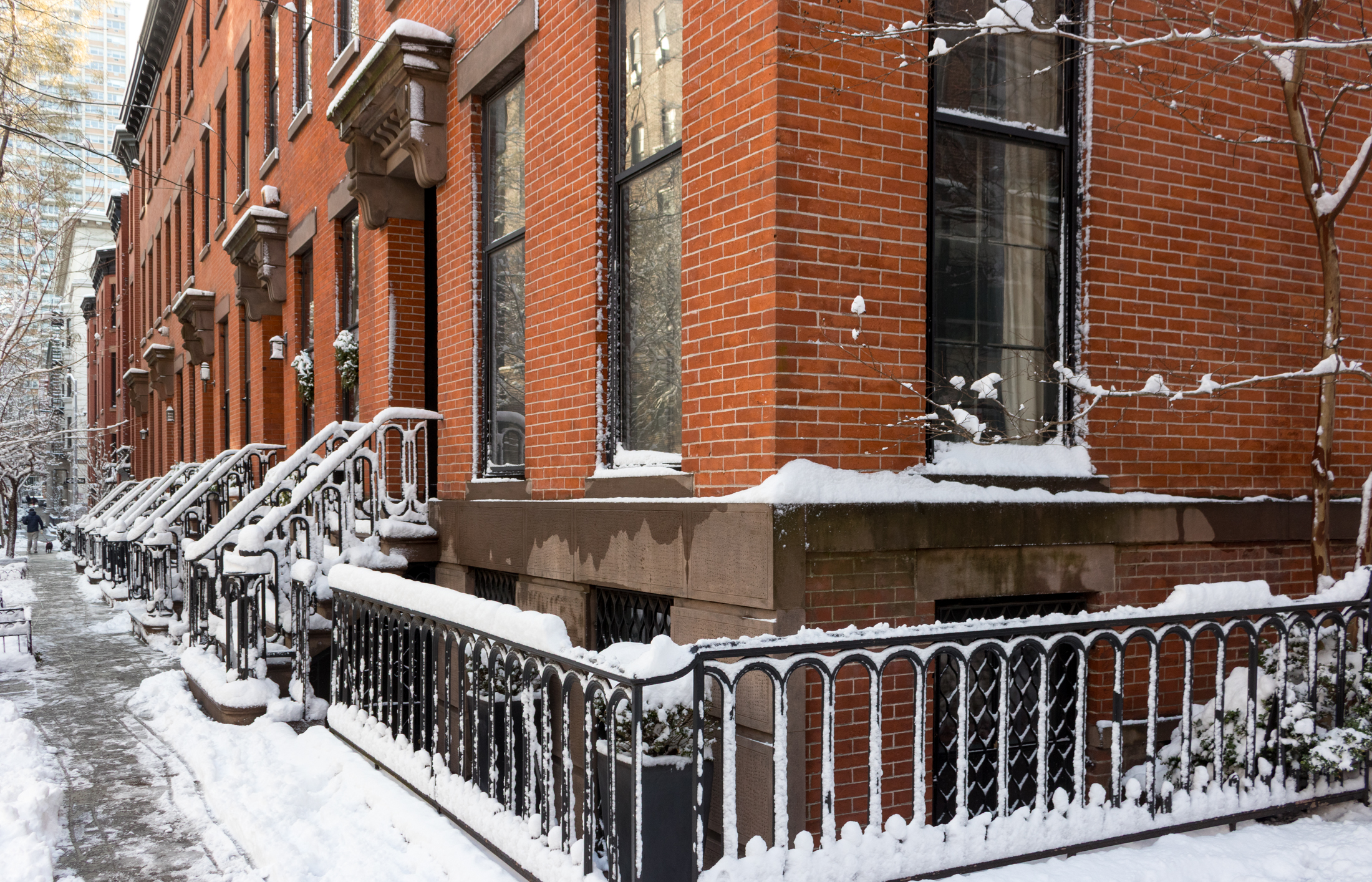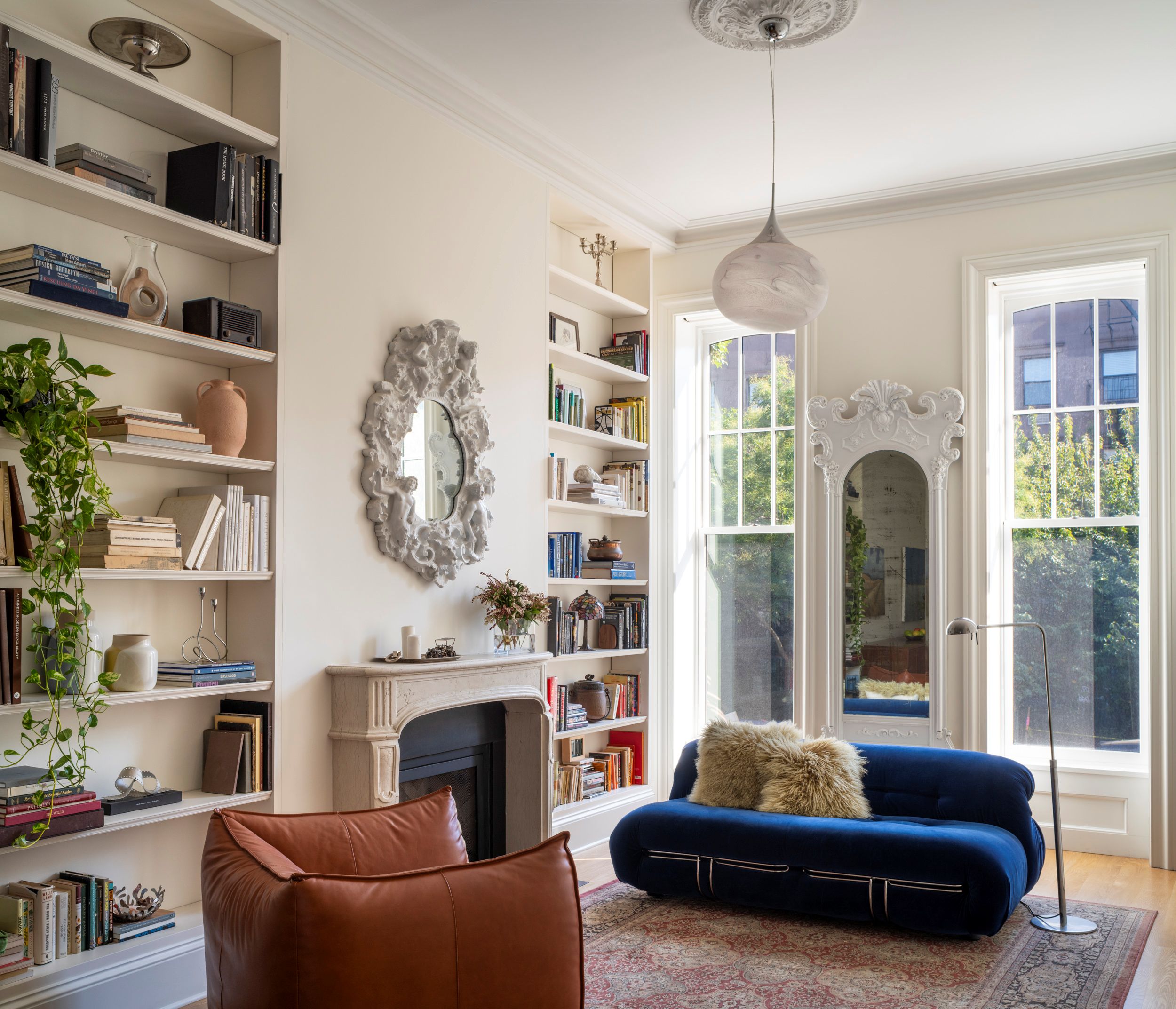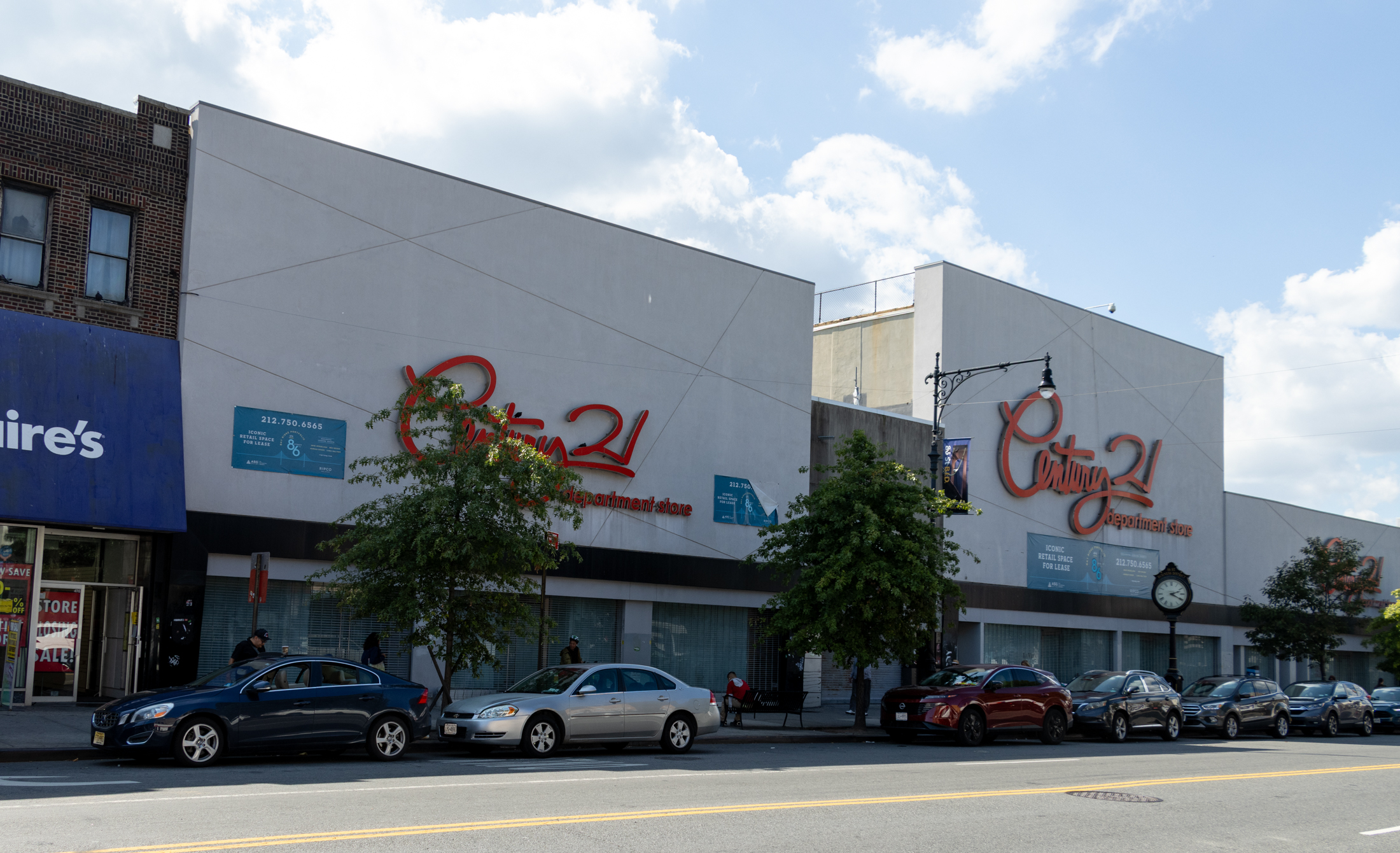Rendering Posted for Modern Townhouse Addition in Brooklyn Heights
This townhouse on the corner of Joralemon and Henry Street Streets in Brooklyn Heights is getting a modern update. The multifamily building at 108 Joralemon Street is losing a four-story rear extension and backyard garage and gaining a rear two-story extension with large windows. The four-story house is currently clad in scaffolding, and we found…


This townhouse on the corner of Joralemon and Henry Street Streets in Brooklyn Heights is getting a modern update. The multifamily building at 108 Joralemon Street is losing a four-story rear extension and backyard garage and gaining a rear two-story extension with large windows. The four-story house is currently clad in scaffolding, and we found this rendering tacked to the front.
CWB Architects is the architect of record. Landmarks approved the proposal last year.
The building recently had five apartments, but alteration permits indicate it’s being converted to a one-family. The 4,800-square-foot building last changed hands in February 2013 for $3,210,000. What do you think of the addition?
Click through to see a construction shot.






This house was originally built as a single family house – like most of Brooklyn’s townhouses.
The trend of row houses being converted back to their original configurations is not a bad thing – the fact that the families with the ability to restore and rebuild row houses want to do so in an urban environment rather than the suburbs seems to me to be something to be welcomed.
The overall square footage of this house is actually 3,480 square feet.
In addition to all of the tax benefits the city accrues as a result of the activity at this property – this renovation will provide incredible jobs for anywhere from 12-25 craftsmen and mechanics for 12-15 months – The money spent to renovate this building goes almost entirely and directly into the local economy in the form of labor and materials.
All forms of housing are needed when building a healthy urban environment – we are fortunate in Brooklyn to have such and environment – healthy and growing in all directions.
I think it is an elegant addition, and as this is my neighborhood, I am very happy with the improved look it will have. It served as a dormitory for married “Bethelite” couples of the Watchtower Organization for many years. The garage was hideous. There was not much left of the interior details from before Watchtower bought it, so I am happy to see a family take on a massive project to turn it into a well-designed single family home again. As for those who hate anyone rich enough to live here, the alternative would have been four or five luxury condos. This way, you only have to hate the success of one family.
I have to say, I also find this rather disgusting. The 4-story house isn’t big enough for one family? They really need the addition? I know it’s just replacing an older addition, but that was to house five apartments.
Honestly, what is it to you how or where people choose to spend their money? The only comments I find disgusting are the sanctimonious expressions posted here. Nobody was evicted or forced to move out here nor was any monstrosity of a renovation undertaken.
What’s worse – someone buying a wreck for their own use or a developer buying the same house to make a profit off of? I must have missed it when deBlasio decreed that every real estate transaction also include a social good (this is of course filling the City’s coffers with transfer taxes, mortgage recording taxes, and mansion tax in addition to the property taxes as well as the reassessment in property taxes given the improvements taking place)?
Must be very difficult to live and let live.
In fact, this article goes perfectly with yesterday’s feature article about developer’s now catering to the wealthy. Instead of buying a brownstone and turning it into two or three apartments, developers see that the demand is from the very wealthy for single family homes. That means, in many cases, two or three families having to find new homes. I assume you’re aware that that causes many ripple effects on families and neighborhoods. Not everyone has your attitude of “I could care less what other people do.”
http://bstoner.wpengine.com/blog/2014/06/as-brownstone-prices-soar-developers-changing-approach/?ic_source=ic-featured-frontpage-top
TenaciousM’s opening salvo says it all. It is important how and where one spends one’s money. The affluent have a huge effect this way. By using more than their share, they make it ever harder for those who live more tenuously. Imagine if all of brownstone Brooklyn reverted back to one-family houses. Imagine if the current trend of combining apartments in coops continues. The city will become a suburb, but a walkable one, with familes–mostly white and wealthy–taking up most of the space. And consider this: why is there no equivalent of Brooklyn Bridge Park in Canarsie?
If every five units became one unit, we’d have a big problem. This is a subtle, but in the aggregate, very powerful consequence of gentrification and it is having a huge effect on how many families can live in a given neighborhood. If caring about stuff like that is sanctimonious, then I happy to oblige.
One issue is that more and more formerly multi-family houses are being turned into one-family houses, reducing the number of housing units available, regardless of price. People are increasingly wishing to turn urban homes into the equivalent of oversized suburban “McMansions,” and the result is a decline in the advantages of urbanization as a solution to environmental problems. So it is not a question of how people spend money, but more a question of selfishness, taking more space than one needs in a city where many people are being forced out of their homes.
As if housing in NYC, and in Brooklyn in particular, is not already extremely expensive and hard to find, this trend of the very wealthy buying multi-family townhouses and converting them back to one-family homes adds to the squeeze. If you want twelve rooms and five baths and a media room and all that stuff go back to the suburbs. Don’t come live in the city if mega-consumption is your way. The environmental benefits of urban living are being slowly strangled by this over-consumption of space and resources. And I am sure many of these families are driving gas-guzzling Range Rovers as they go about their daily errands.